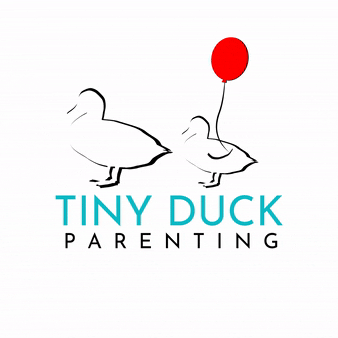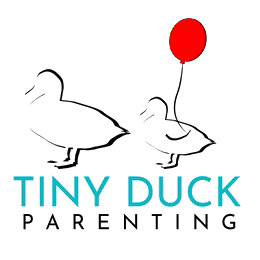Parenthood is an exhilarating rollercoaster ride, complete with magical moments, heartwarming memories, and the occasional head-scratching challenges.One such challenge is when your once peaceful sleeper transforms into a nighttime party animal. If your 2-year-old has suddenly decided to embrace the nocturnal life, fear not! In this blog post, we’ll explore the curious phenomenon of toddler insomnia and uncover some possible reasons behind your little one’s sleepless nights.

- The Quest for Independence:
Ah, the toddler stage—a time when independence sprouts like wildflowers and bedtime becomes a battleground. Your once-obedient sleeper may be resisting bedtime simply because they’ve discovered newfound autonomy. It’s their way of exerting control over their tiny kingdom. Remember, it’s not personal; it’s just your child’s mission to conquer the world, even if that means conquering your sleep schedule too! It’s important to give your toddler control and choice throughout the day, but the bedtime routine and bedtime is where you as the grown-up take over and become the leader. You can offer choice to your toddler throughout the process- what pjs to wear, what two books to read, but beyond that limit choices- we want your toddler to be winding down, not amping up. No matter who is doing bedtime, make sure the routine is identical so your toddler’s body creates muscle memory around bedtime and begins the calm-down process easily. - Active Little Minds:
At the tender age of 2, your child’s imagination is blooming faster than a field of tulips in spring. Their active little minds are buzzing with curiosity, creativity, and an insatiable appetite for learning. It’s no wonder that bedtime can sometimes take a backseat to the endless adventures unfolding inside their heads. From imaginary friends to building towers of blocks in their dreams, their active imagination might be keeping them wide awake. Room conditions and a very predictable bedtime routine will help lead your toddler to dreamy sleep. - Room Conditions: Creating the Optimal Sleep Sanctuary
When it comes to promoting sound slumber, the environment plays a crucial role. Take a moment to evaluate your child’s sleep space. Is the room too bright or too noisy? A completely dark room and a white noise machine can work wonders in lulling your little one into dreamland. Ensure the temperature is comfortable and the bedding cozy, inviting them to snuggle up and drift off to sleep. - Sleep Timing: Navigating the Balancing Act
Ah, the delicate dance of sleep timing! As your child grows, their sleep needs may evolve, and finding the perfect balance can be challenging. Perhaps your 2-year-old is transitioning from two naps to one, resulting in a shift in their sleep schedule. Or they nap a little too long during the day, impacting their nighttime sleep. Experiment with adjusting nap times and bedtime to find the sweet spot that aligns with their natural rhythm. Consistency is key! Typically a 5-hour gap between nap and bedtime is ideal. A nap around 1-2 hours is ideal for a toddler over age 2.5 and 1.5-2.5 for 2.5 years and under. - FOMO (Fear of Missing Out): Staying Up for the Party
In our hyper-connected world, FOMO is not limited to adults. Toddlers, too, can experience the fear of missing out on exciting moments, whether it’s family activities, the buzz of household chatter, or simply being involved in the action. Bedtime might suddenly seem unappealing when they suspect there’s a party happening without them. Combat FOMO by engaging them in meaningful activities during the day, setting clear boundaries, and gradually winding down with calming activities before bedtime. - Sleep Regressions: The Hurdles Along the Way
Sleep regressions are like unwelcome guests crashing your toddler’s slumber party. Just when you thought you had bedtime under control, your child’s sleep patterns take a detour, leaving you bleary-eyed and bewildered. These regressions are often triggered by developmental milestones, changes in routine, or external stressors. While they may disrupt your nights temporarily, rest assured they’re usually a sign of progress. Stay patient, stick to your routine, and remember, this too shall pass.
Sleep regressions are something you have now experienced a lot as your toddler went through infancy. For infants a sleep regression is something that passes without you having to make any changes- you simply have to continue to offer sleep and the regression will pass. With toddler sleep, that is typically not the case. If your toddler’s sleep has become a challenge, it is likely the issue needs to be addressed and won’t simply go away. The sooner you make sleep adjustments the better. Often toddlers need a sleep training renaissance- set a clear schedule, routine, and boundaries around your toddler’s sleep.

So, dear weary parents, if you find yourself wondering why your once serene 2-year-old has transformed into a nocturnal creature, remember that you’re not alone on this sleepless adventure! Keep calm, embrace the journey, and soon enough, you’ll find yourself happily tucking in your tiny duck once more.
Remember, if you are struggling with toddler sleep you don’t have to do it alone. Check out our Week to Sleep video program, you will get all the answers you need to get your toddler’s sleep back on track.





